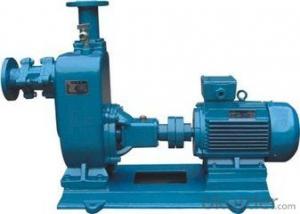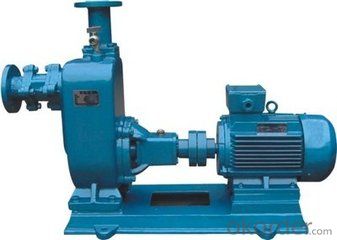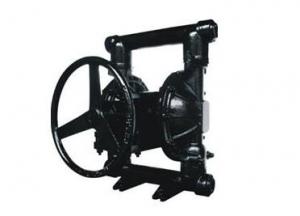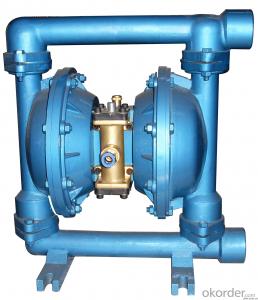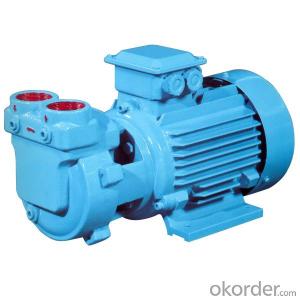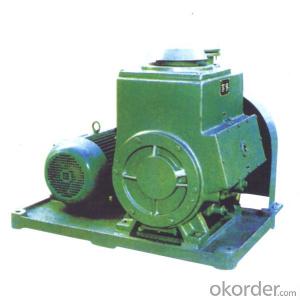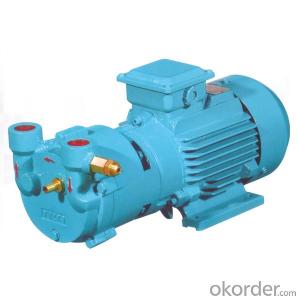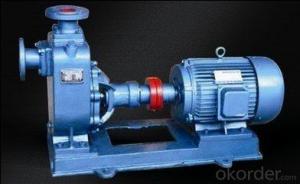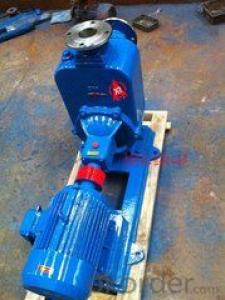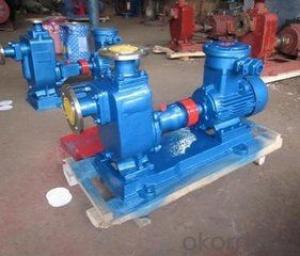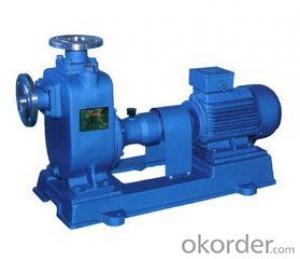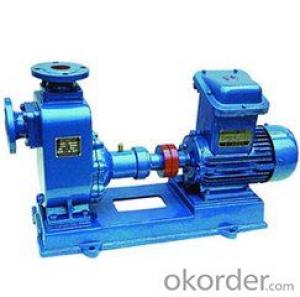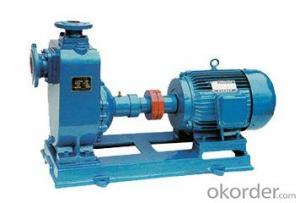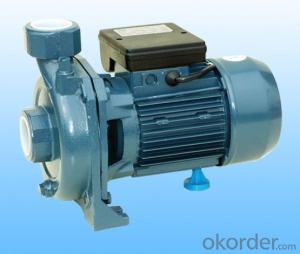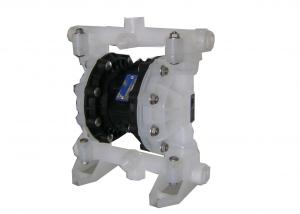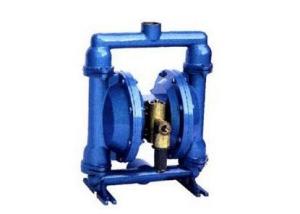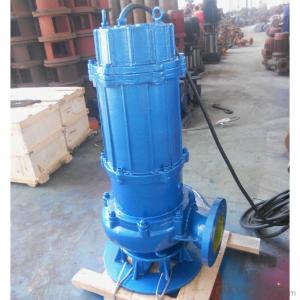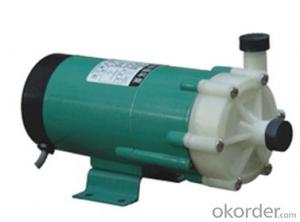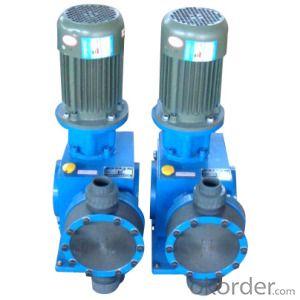ZX series self-priming pump 50ZX- 15- 12
- Loading Port:
- Shanghai
- Payment Terms:
- TT OR LC
- Min Order Qty:
- 10 unit
- Supply Capability:
- 300 unit/month
OKorder Service Pledge
OKorder Financial Service
You Might Also Like
A, product overview
This company produces the ZX series self-priming pump is the earliest according to relevant technical data at home and abroad after absorption, digestion, improve the development of pump energy saving products.Self-priming centrifugal pump, the pump and other pump does not have the self-priming capacity, etc.Such as corrosion resistant mechanical seals and stainless steel material can call some of the chemical, pharmaceutical acid and alkali medium.
Second, the product features
1, the pump with self-priming function, do not need to install the bottom valve in pipeline, only to ensure storage in pump body before work are quantitative liquid can have "a drainage, life-long self-priming" function.So both simplifies the pipeline system, and improved the working conditions.
2, has a compact structure, convenient operation, stable operation, easy maintenance, high efficiency, long service life.
Three, use the product
1) suitable for urban environmental protection, construction, fire control, chemical, pharmaceutical, dyes, and dyeing, brewing, electric power, electroplating, papermaking, oil, mining, equipment cooling, tanker unloading, etc.
(2) apply Yu Qingshui, sea water, chemical liquid medium with acid, alkalinity and with general mushy slurry (medium viscosity 100 mile, or less under the solid content of 30%).
(3) mount a rocker arm sprayer, the water can go into the air, a small drips to spray, is a good tool for farm, nursery, garden, tea garden.
And (4) can be matched with pressure filter of any model and specifications, sending size belt filter to filter the most ideal auxiliary pump.
Fourth, working conditions
Traffic: 3 ~ 500 m3 / h
Head: 10 ~ 80 m
Ambient temperature 50 ℃ or less
Medium temperature is 100 ℃ or less
Medium density of 1.24 or less by 103 kg/m3
- Q: Are air pumps suitable for pneumatic systems?
- Yes, air pumps are suitable for pneumatic systems. Air pumps are commonly used to generate and supply compressed air, which is essential for the operation of pneumatic systems. The compressed air from air pumps can power various pneumatic components such as cylinders, valves, and actuators, enabling the system to perform its intended functions effectively.
- Q: Can an air pump be used for inflating air mattresses with flocked tops?
- Yes, an air pump can be used for inflating air mattresses with flocked tops.
- Q: Can an air pump be used for inflatable trade show booths?
- Yes, an air pump can be used for inflatable trade show booths. Air pumps are commonly used to inflate and maintain the shape of inflatable structures, including trade show booths.
- Q: Can an air pump be used for inflatable advertising balloons or blimps?
- An air pump is capable of inflating advertising balloons or blimps and is actually one of the most commonly used methods for inflation. This method offers convenience and efficiency in inflating these large balloons and blimps, as it saves time and effort compared to manual inflation. There are air pumps specifically designed for this purpose, which provide the necessary airflow and pressure to quickly inflate the advertising balloons or blimps. These pumps are typically portable and user-friendly, making them a popular choice among advertising companies or event organizers. Moreover, utilizing an air pump ensures a consistent and controlled inflation process, resulting in a well-shaped and properly inflated balloon or blimp that maximizes visibility and impact.
- Q: Can an air pump be used for water filtration?
- No, an air pump cannot be used for water filtration. Air pumps are designed to move air, not filter water.
- Q: What is the glass tube that the air pump connects to the air compressor?
- It's called a pressure regulating valve! Go to the mechanical and electrical market, and remember that the pressure is the range of that gauge. Then the size of the interface, dozens of domestic, imported only 800
- Q: How does an air pump handle different air compositions in confined spaces?
- An air pump is a device that is designed to handle various air compositions in confined spaces by utilizing its mechanical components and operating principles. The primary purpose of an air pump is to move or circulate air, which can be achieved through different mechanisms such as displacement, compression, or suction. When it comes to handling different air compositions in confined spaces, an air pump's ability to adapt relies on its design and functionality. Here are a few ways an air pump can handle variations in air compositions: 1. Filtration Systems: Many air pumps are equipped with filtration systems that help remove impurities, dust particles, and other contaminants from the air. These filters can be designed to target specific substances, such as allergens, odors, or even specific chemicals, allowing the pump to adjust the composition of the air being circulated. 2. Adjustable Settings: Some air pumps have adjustable settings that allow users to modify the pressure, flow rate, or speed of air circulation. By adjusting these settings, the pump can accommodate different air compositions, ensuring optimal performance in confined spaces. 3. Material Compatibility: Air pumps are typically constructed using materials that are compatible with a wide range of air compositions. This prevents the pump from reacting with or being damaged by different gases or chemicals that may be present in the confined space. 4. Multiple Pumping Mechanisms: Depending on the specific type of air pump, it may utilize different mechanisms to handle various air compositions. For example, a positive displacement pump uses mechanical components to displace a fixed volume of air, while a centrifugal pump relies on centrifugal force to move air. These different mechanisms offer flexibility in accommodating diverse air compositions. 5. Safety Features: In confined spaces with potentially hazardous air compositions, air pumps may be equipped with safety features such as gas detectors or alarms. These features can detect the presence of harmful gases or substances, allowing the pump to adjust its operation or shut down if necessary. In summary, an air pump handles different air compositions in confined spaces through filtration systems, adjustable settings, material compatibility, multiple pumping mechanisms, and safety features. These capabilities ensure efficient air circulation while maintaining a healthy and safe environment.
- Q: How does an air pump handle variations in ambient temperature?
- An air pump handles variations in ambient temperature by adjusting its internal mechanisms to compensate for the changes. It may have sensors and controls that monitor the temperature and automatically make adjustments to maintain a consistent and optimal performance. This ensures that the air pump operates efficiently and effectively regardless of the surrounding temperature conditions.
- Q: How does an air pump handle saltwater exposure?
- An air pump may not be suitable for saltwater exposure as the salt can corrode its components, leading to potential malfunctions or damage. It is recommended to use a pump specifically designed for saltwater environments to ensure long-lasting performance and avoid any potential issues.
- Q: I want to change the refrigerator compressor to the air pump and ask for the wiring method
- Originally how to answer, now still want to connect like that
Send your message to us
ZX series self-priming pump 50ZX- 15- 12
- Loading Port:
- Shanghai
- Payment Terms:
- TT OR LC
- Min Order Qty:
- 10 unit
- Supply Capability:
- 300 unit/month
OKorder Service Pledge
OKorder Financial Service
Similar products
Hot products
Hot Searches
